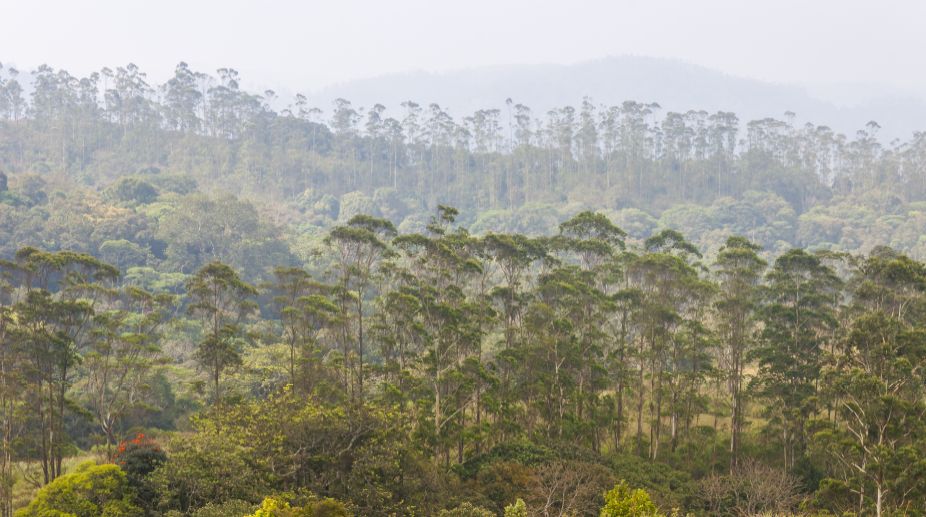India reminds world about challenges posed by climate change
India has reminded the global community how the impact of climate change has increasingly become evident in the form of one disaster or another.

Representational Image (PHOTO: Getty Images)
India’s forest and tree cover has gone up by one per cent, the latest assessment by the Forest Survey of India (FSI) has shown. There is an increase of 8,021 sq km (about 80.20 million hectare) in the total forest and tree cover of the country, the India State of Forest Report (ISFR) 2017, released here on Monday showed, as compared to the previous assessment in 2015.
The forest cover has increased by 6,778 sq km and that of tree cover by 1,243 sq km, with the total forest and tree cover notching 24.39 per cent of the geographical area of the country, according to the report, the 15th in the series, which coincides with three decades of forest cover assessment by FSI. The first forest cover assessment was carried out in 1987.
The present assessment also revealed that 15 states/UTs have above 33 per cent of the geographical area under forest cover. Of these seven states/UTs have more than 75 per cent forest cover while eight states have 33-75 per cent forest cover. About 40 per cent of the country’s forest cover is present in nine large contiguous patches of 10,000 sq km, or more, the report said.
Advertisement
However, five states of the North-East ~ Mizoram, Nagaland, Arunachal Pradesh, Tripura and Meghalaya ~ have shown a decrease in forest cover. While this area enjoyed a high tree cover of 75-80 per cent, shifting cultivation (jhum) that involved rotational felling, diversion of forest land for developmental activities, submergence of forest cover, agriculture expansion and natural disasters were identified as the cause for the decrease.
Emphasising the increasingly green credentials of the country, Union Environment Minister Harsh Vardhan on Monday said India has shown an increase in forest and tree cover over the past decade, as against a decreasing trend globally. Despite a tremendous pressure of increasing population and livestock, as well as development, India has been able to not only preserve but expand its forest wealth, Vardhan said releasing the India State of Forest Report (ISFR) 2017. “India is ranked 10th in the world, with 24.4 per cent of land area under forest and tree cover, even though it accounts for 2.4 per cent of the world surface area and sustains the needs of 17 per cent of human and 18 per cent livestock population,” the minister said.
None of the other nine countries has a population density of more than 150 persons per sq km, compared to India, which has a population density of 382 persons per sq km, the minister elaborated. Vardhan added that as per the latest FAO report, India is placed 8th in the list of top 10 nations reporting the greatest annual net gain in forest area.
Giving the key findings of the India State of Forest Report 2017, Saibal Dasgupta, Additional Director General in the Environment Ministry, said an encouraging sign was that much of the increase in the forest cover has been observed in the Very Dense Forest (VDF) category, which is a heartening news as VDF absorbs maximum carbon dioxide from the atmosphere.
Asked about the decreasing forest cover in the North-East, Dasgupta said the percentage of jhum cultivation has gone down over the years. “But we will try to wean the people away from jhum cultivation and increase the livelihood.
On India’s commitment to achieving its nationally determined contributions (NDCs) under the Paris Agreement on Climate Change, Dasgupta said the country was striving to create an additional carbon sink of 2-5 to 3 billion tonnes of Carbon-dioxide equivalent through additional afforestation by 2030. “But going at the present rate, we can add 1.9 billion tonnes and would fall 0.6 billion tonnes short,” he pointed out. “That has to be augmented through more afforestation programmes.”
Advertisement